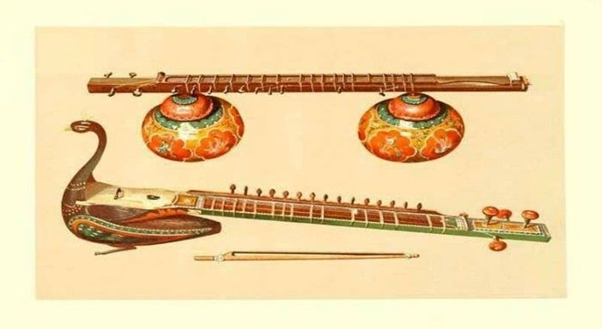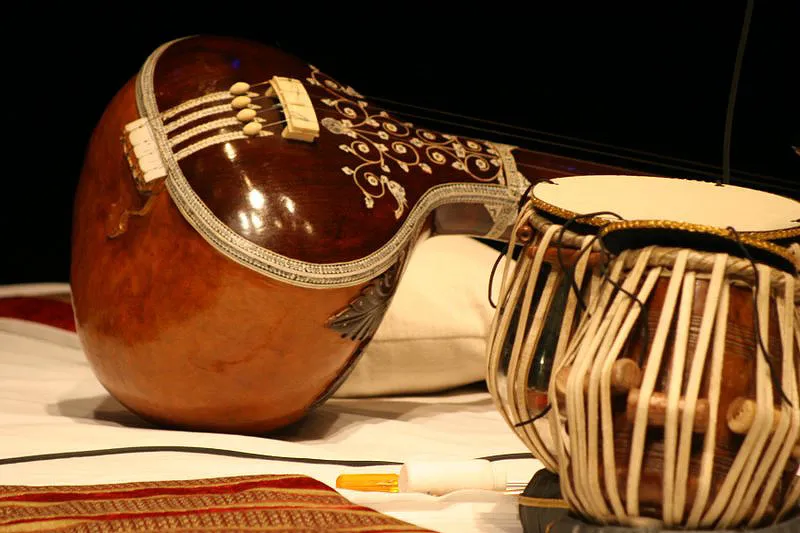VEDIC MUSICAL INSTRUMENTS

Vedic literature refers to various types of musical instruments. In the Rigveda, musical instruments mentioned have basically only been used as accompaniments to sing and dancing. There are no references to playing them solo.
INSTRUMENTS OF THE VEDIC PERIOD
Two kinds of instruments have been referenced during Vedic period:
- Ancient string and wind instruments
- Ancient percussion and solid instruments
The following musical instruments are referred to in the in the Rig Veda. These instruments later developed into vana (lyre), veena, pinga (violin), Venu or vamsha (flute) and mridanga (drums), .
Ancient string and wind instruments
Veena is a plucked string instrument which can produce music in a 3 octave range. This actually belongs to the family of chordophone instrument of India. Kapisheersh, Karkari (RV 2.43.3) and Varanya Veena also called Baan Veena have been mentioned in the Samaveda and Rigveda. . In fact, all string instruments were called veena.The Veena was considered the most superior of all stringed instruments in the Vedas. It has been mentioned not only in the Vedas but also in the Sattaptha Brahmana and Taittiritya Samhita and is therefore also known as the divine instrument (or the instrument of the Gods).In Vedic literature different kinds of Veenas are mentioned.
Read MoreAncient percussion and solid instruments
Percussion instruments have played a important role in the musical traditions of ancient India, contributing rhythm (taal) to the swara and adding cultural symbolism, and ritualistic significance to various artistic and religious practices. Through references in Vedic texts, classical treatises like Bharata's Natyasastra, and epic narratives such as the Ramayana and Mahabharata, we gain valuable insights into the diverse array of percussion instruments that populated the ancient Indian musical landscape. From the resounding beats of the Muraja to the formidable resonance of the Bheri, each instrument carried its own distinct characteristics, serving as both musical tools and cultural artifacts.
Read More
